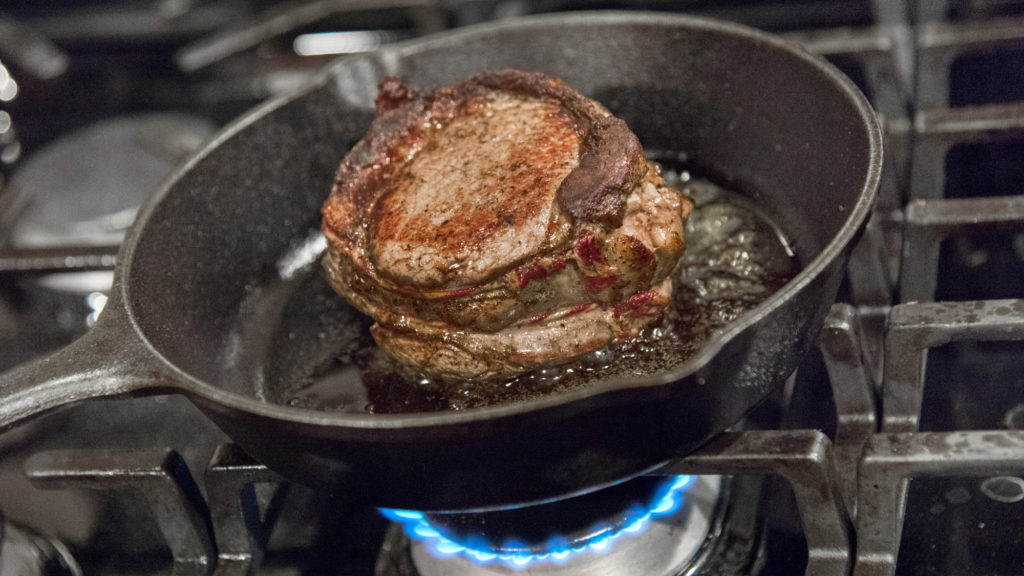Cooking and Handling Tips
- The best way to defrost our meat is in the refrigerator on a tray. And thanks to flash-freezing, there is very little moisture and flavor loss. You will see some juices accumulating around the meat when it thaws, however. But, don’t fear, our grass-fed beef is loaded with natural beef juices.
- Be sure beef reaches room temperature before cooking by taking it out of the refrigerator and leaving it on a counter for 30 minutes.
- Steaks like New York, Rib Eye, Filet, etc., usually require little more than patting dry, salt and pepper, and oil added to pan or grill.
- Always preheat the oven, pan, or grill before cooking.
- Remember, grass-fed steaks cook faster than similar grain-finished cuts. Reduce cooking times by ~ 20% for recipes that don’t distinguish sources.
- Lean, grass-fed roasts, on the other hand, can cook slower than conventional grain-fed roasts. Add ~20% to the cooking time for liquid-based slow-cooker recipes that don’t specify the beef source.
- Braising recipe times should be approximately the same.
- Grass-fed steaks are best served medium-rare to medium. If in doubt, use a meat thermometer: medium-rare – 125°, medium – 135° Fahrenheit.
- For steaks, sear first then finish at a lower temperature.
- For burgers, cook on high heat – sear first side 1 minute, flip, sear second side 1 minute, then flip back. Watch for the juices to leak to surface, then flip one last time and watch for same. Inside should be pink and juicy, but not red.
- Let all meat rest for at least 10 minutes before slicing or serving. Always look for and slice across the grain.

